Filtered By: Topstories
News
Deadly wait: The problems of identifying Yolanda's victims
By LILA RAMOS SHAHANI
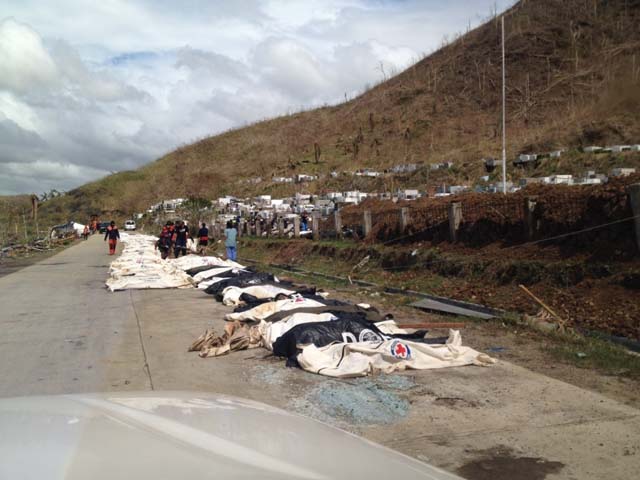
In one mighty instant, just as the howling winds and floods had finally subsided, and they were left to stare blankly at the rubble that had once been their beloved homes—the people of Tacloban, in a strange, almost semi-conscious stupor, quietly became accustomed to the overpowering stench of the dead. There was here no briny breeze of the sea, nor even the proverbial smell of mud; just the heavy scent, if not the deafening silence, of decaying flesh that hung about each corner with an ominous pall.
Five months after Yolanda, affected areas have slowly begun to show signs of life. Bunkhouses have been built, power partially restored, and markets reopened—but the 4,759 dead (the official number, but this may well be under-reported) festering in mass graves have yet to be identified.
With reports about uncollected dead bodies bombarding the public in the wake of the storm, the National Bureau of Investigation (NBI), led by Atty. Medardo De Lemos, sent a team to Tacloban two days after the disaster to assess the situation. They discovered dead bodies strewn all over roads, their retrieval having been carried out mostly by firemen from the Bureau of Fire Protection. No clear Disaster Victim Identification (DVI) system was yet in place.
But when the Office of the President issued a directive creating a task force to identify bodies and expedite their burial, the Department of Health (DOH) was suddenly at a loss. Dr. Joselito Feliciano of the DOH says this was a new designation for them, since most were “field epidemiologists,” experts not in identifying the dead but in studying outbreaks of disease.
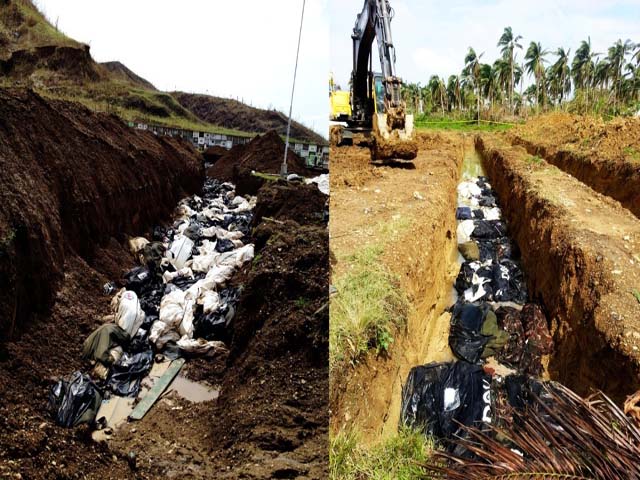
On November 17, Dr. Fortun and her team flew to Tacloban, donned their gloves, and began identifying Yolanda’s dead.
Rapid decay
It was a Herculean task—the bodies were decaying rapidly, there were no refrigerated containers to store them, and there were not enough personnel to assist the team, even after the ICRC had sent its own forensic specialist, Dr. Andres Patiño Umana, to help. With only ICRC’s basic equipment for DVI processing, in addition to Dr. Fortun’s own personal supplies, they started processing the remains, improvising along the way. Despite the limitations, they processed an average of 150 bodies per day.
However, on November 22, five days after the initial DVI process had been established by UP-DOH, the NBI took over and Dr. Fortun’s team was quickly dissolved.
The NBI team, headed by Dr. Wilfredo Tierra of the Bureau’s Medico-Legal Unit, replaced Dr. Fortun’s system with its own. Composed of 15-20 medical doctors, technicians, biologists and fingerprint examiners, they were divided into three teams and went on nine-day rotations to examine dead bodies.
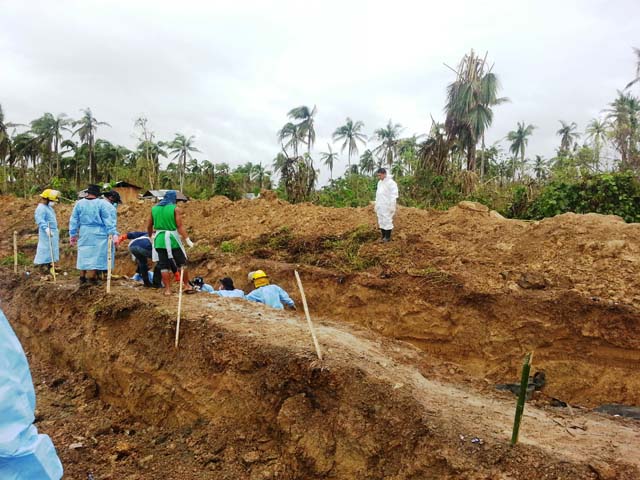
The DOH was then re-assigned to monitor tetanus and leptospirosis cases. Her presence apparently no longer needed, Dr. Fortun eventually pulled out of Tacloban.
“Insufficient” administrative order?
“We never seem to learn,” laments Dr. Fortun, who is the first Filipino to be formally trained as a forensic pathologist. “We only become concerned with the dead once people start smelling their stench. With an inadequate system of DVI, we unfortunately just choose to move on to the next disaster.”
There are, in fact, no laws governing DVI processes in this country; Instead, there is only the DOH’s Administrative Order (AO) 18, series of 2007, or the “National Policy on the Management of the Dead and Missing Persons during Emergencies and Disasters.”
Under AO 18, a body would be established under the National Disaster Coordinating Council (later renamed National Disaster Risk Reduction Management Council or NDRRMC) solely focused on the management of the dead, missing and their bereaved families during disasters and emergencies. It followed a community-based approach: in the event of a disaster, the local health officer of the concerned local government unit (LGU) would lead the management of the dead and missing.
In cases of mass fatality incidents caused by natural disasters, such as Yolanda, AO 18 mandates the NBI to take charge of the DVI process. When they are caused by human-generated activities, however, the Philippine National Police should be in charge.
The order also recommends the use of the Interpol’s Disaster Victim Identification System.
Dr. Fortun observes that AO 18 was relatively functional in the past, and was used during Typhoon Sendong in 2009 and Typhoon Pablo in 2012. But in both disasters, the death toll never reached 2,000. Yolanda, however, took at least three times as many lives.
“The administrative issuance has simply become ineffective,” Fortun adds, because it can no longer take into account massive calamities where the respective LGUs themselves have also been decimated.
A lack of coordination?
When the DOH produced a report on its disaster response to the typhoon-stricken areas, it noted an apparent lack of coordination among government agencies, which exhibited little awareness of how to properly manage dead bodies. The few agencies with know-how on DVI followed different protocols.
Not only was there a problem of coordination among government agencies, available resources were not tapped. Dr. Maria Corazon de Ungria, head of the DNA Analysis Laboratory in UP’s Natural Sciences Research Institute, says, “We volunteered to help in the DVI of Yolanda. In fact, we already organized volunteers and companies willing to lend us—take note: lend, not rent out—additional equipment for analysis. But the NBI did not tap us. We volunteer every time there is a disaster, and every time we get turned down.”
Accuracy over speed
Dr. Fortun does not fully understand why the NBI had to change the DVI system she and her colleagues had originally established when they arrived in Tacloban. The NBI’s INTERPOL-based system requires DNA analysis, which means genetic material has to be extracted from the thighbone of each human body. It's a process, Dr. Fortun argues, that takes a great deal of time and resources.
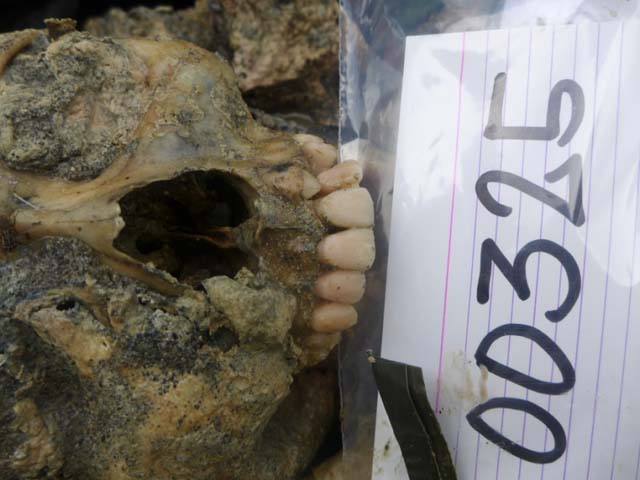
Responding to the public backlash over the slow burial of the dead in the Visayas, Justice Secretary Leila de Lima noted that they were simply prioritizing “accuracy over speed.”
But, to Dr. Fortun, this did not have to be an issue of prioritization. “You cannot say that we are not accurate,” she notes, emphasizing that, despite overwhelming limitations, she and her team made sure they took note of every little detail—whether the body belonged to an adult, child or infant; and distinct characteristics of teeth, basic skin markings, and clothes; as well as accessories and identification that came with each body. Even Dr. de Ungria, a DNA forensic scientist, agrees: “With so many bodies to identify and limited resources, practicality should be considered. DNA analysis should only be done when it is absolutely necessary.”
“Unfair” expectations
But neither Dr. Fortun nor the NBI team could have expedited the identification and burial of all the bodies. While most human and financial resources were poured into relief operations, scant assistance was extended to DVI teams.
NBI Medico-Legal Division head Dr. Tierra likens it to the process for obtaining an NBI clearance: “When we estimate the need to hire five personnel per NBI Clearance Center and we only get two, due to various limitations, it seems unfair to expect us to be as efficient.” The lack of funding and equipment constrained DVI work, and he argues that they could have responded more effectively had there been more competent personnel to assist them.
Even the locals themselves apparently hampered DVI work, as there were communities resisting the establishment of collection centers in their localities. In some cases, the government even had to buy the land where the dead bodies were being laid out.
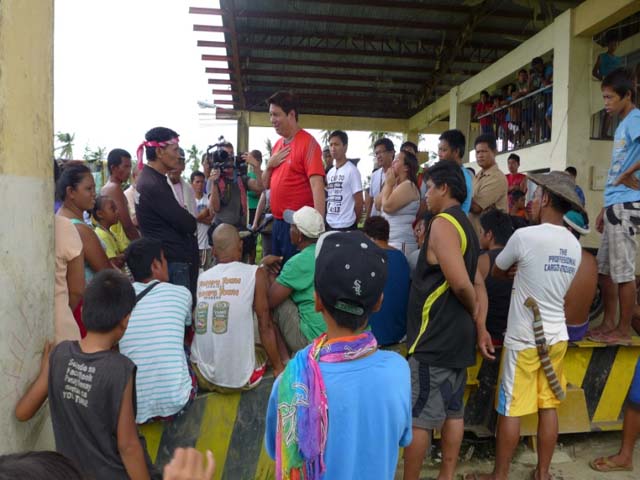
A need for systemic revamp
In the face of ever-erratic weather patterns, it is critical that the country’s disaster management system cover all facets of relief and rehabilitation. Not even the dead should be left out.
“The problem with AO 18 is that it’s too generic,” says Dr. Feliciano of DOH. “There should instead be a national policy for the management of the dead and missing. This should not only have elaborate guidelines, but also indicate flexibility, depending on the disaster at hand. Accuracy and practicality should both be considered.”
In addition, Dr. Feliciano also proposes that the national policy should mandate a corps of professionals who will always be available for disaster response since, in large disasters like Yolanda, an entire region was affected and many local health officers were unable to respond.
“The national policy would also ensure a sufficient budget for a more systematic management of the dead and missing,” he added.
Legal initiatives
To date, several lawmakers have sought to address the need for a stronger DVI policy in the country.
In the fifteenth Congress, Senator Aquilino Pimentel III filed Senate Bill 3368, which sought to amend the Local Government Code and mandate all local health officers to undergo training in the identification of dead bodies during and after disasters. In early 2002, a Mandatory Autopsy Bill was also filed requiring all law enforcement agencies to conduct autopsies on persons who had died of “violent and questionable deaths.” These bills have yet to be passed into law.
Inadequacy of training
Until the University of Baguio had opened a forensic science program in 2012, there had been no educational institution in the Philippines offering a degree in Forensic Science. Dr. Fortun herself received training at the King County Medical Examiner’s Office in Washington.
Two bills in the current Congress—Senate bill 700 and House bill 1105—seek to address this by establishing a Forensic Science Institute in the University of the Philippines system. If established, this would be a milestone in our country’s disaster-ridden history.
In the long run, Dr. Fortun says, proper management of the dead can only be beneficial to the living. It is surely time for the government to widen the scope of its disaster preparedness, and conduct a systemic overhaul that takes these many complex issues into account. Rehabilitation should not end with helping the survivors; it must include the dead. — KBK/HS, GMA News
Assistant Secretary Lila Ramos Shahani is Head of Communications of the Human Development and Poverty Reduction Cabinet Cluster, which covers 26 government agencies tasked with poverty and development. She was assisted on this piece by Ralph Angelo Ty, Eugene Tecson and Lawrence Joy dela Fuente. She would also like to thank the Department of Health for all the photos.
More Videos
Most Popular




